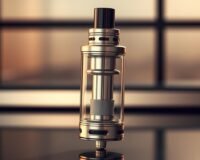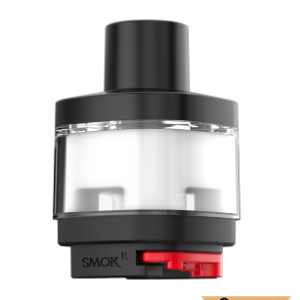Analyzed today MYVAPESITE E-cigarettes out 10 Years of experience on the German market – liquid tax is in the year 2024 raised. Let's take a look at the background, the story, the before- and disadvantages as well as the effects of previous tax rates.
Background and development history:
The e-cigarette industry has developed rapidly in recent years, and the accompanying regulatory changes have caught our attention. The liquid tax, introduced as part of the Tobacco Modernization Act 2022, is the result of intensive efforts at EU level,to create a uniform taxation of e-cigarettes. Originally, the nicotine content was supposed to serve as the basis,but after careful consideration, a volume-based tax on all e-cigarette liquids was introduced instead.
The development of liquid tax prices:
The liquid tax is not a static quantity,but is subject to a gradual adjustment. In July 2022 it started with a price of €0.16 per 1ml,followed by an end to sales for tax-free goods in February 2023. On January 1st 2024 the tax rose to €0.20 per 1ml,followed by further increases to €0.26 per 1 ml per year 2025 and finally €0.32 per 1ml in 2026.
This tax applies to nicotine-containing and nicotine-free products,Shortfills,Longfills,Flavors and bases.Products,those before June 30th 2022 were produced,are exempt from tax,while goods produced from this date may only be sold with a tax stamp.
Before- and disadvantages of the liquid tax:
Advantages:
- Regulation and market stability: The liquid tax brings clarity to a growing market and ensures a stable environment. This allows us, to adapt our business practices and act transparently.
- Consumer Confidence: Clear taxation strengthens consumer trust. Our commitment to transparency and high-quality products is supported by this regulation.
- Market shakeout: Taxes can contribute to this,to improve our market environment,by screening out providers,that do not meet the required standards. This leads to overall better product quality.
Disadvantages:
- Costs and price increases: The liquid tax entails additional costs,and these could be passed on to consumers. Price increases could make the e-cigarette less attractive compared to conventional cigarettes.
- Disproportionality of the tax: The tax may not sufficiently take into account the potential of the e-cigarette as a less harmful alternative to traditional cigarettes. Higher prices could harm the image of the e-cigarette.
- Incentive to the black market: Due to Germany's independent regulation and the high tax burden, the black market could flourish. This poses health risks and is reminiscent of past crises caused by improperly manufactured products.
Effects of previous tax prices:
It is important to note,that the liquid tax did not come out of nowhere. Previous tax prices have already influenced the industry. Compared to the previous tax rates, the current prices are an adjustment,which appears to be a challenge for many of us.
It's still worth it!
If you look at the e-cigarette as a pure substitute for conventional cigarettes and use it, for example. a cheek steamer (MTL),this is what the average smoker gets (ca. 15 cigarettes/day) with a 10ml liquid 2-3 In terms of days, that's still a saving from a financial perspective!
Regardless, the focus is on the health benefits - thousands of harmful substances in a cigarette vs. average <10 Ingredients in the liquid already show, how to interpret that. Please ask your doctor too, what he thinks is better: Combustion or vaporization? PG and VG are also consumed every day in other areas(Groceries, Medicine and much more.).Numerous studies,above all the Oxford study from England,show on the basis of representative, scientific methods indicate that it is significantly less harmful.
No product imitates the classic process of smoking better than an e-cigarette!
Cochrane Library article:
https://www.cochranelibrary.com/cdsr/doi/10.1002/14651858.CD010216.pub7/full#CD010216-abs-0001































